
Alcyonacea are a species of sessile colonial cnidarians that are found throughout the oceans of the world, especially in the deep sea, polar waters, tropics and subtropics. Whilst not in a strict taxonomic sense, Alcyonacea are commonly known as "soft corals" (Octocorallia) that are quite different from "true" corals (Scleractinia). The term “soft coral” generally applies to organisms in the two orders Pennatulacea and Alcyonacea with their polyps embedded within a fleshy mass of coenenchymal tissue. Consequently, the term “gorgonian coral” is commonly handed to multiple species in the order Alcyonacea that produce a mineralized skeletal axis composed of calcite and the proteinaceous material gorgonin only and corresponds to only one of several families within the formally accepted taxon Gorgoniidae (Scleractinia). These can be found in order Malacalcyonacea (taxonomic synonyms of include : Alcyoniina, Holaxonia, Protoalcyonaria, Scleraxonia, and Stolonifera. They are sessile colonial cnidarians that are found throughout the oceans of the world, especially in the deep sea, polar waters, tropics and subtropics. Common names for subsets of this order are sea fans and sea whips; others are similar to the sea pens of related order Pennatulacea. Individual tiny polyps form colonies that are normally erect, flattened, branching, and reminiscent of a fan. Others may be whiplike, bushy, or even encrusting. A colony can be several feet high and across, but only a few inches thick. They may be brightly coloured, often purple, red, or yellow. Photosynthetic gorgonians can be successfully kept in captive aquaria.
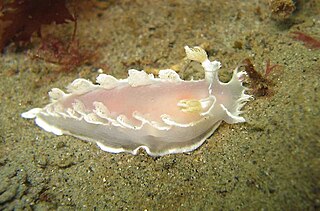
The diamondback tritonia is a species of nudibranch, a marine gastropod mollusk in the family Tritoniidae. It is an opportunistic predator of other marine invertebrates.

The white-edged nudibranch, Coryphella capensis, previously known as Fjordia capensis, is a species of sea slug, specifically an aeolid nudibranch, a colourful sea slug. It is a marine gastropod mollusc in the family Coryphellidae.
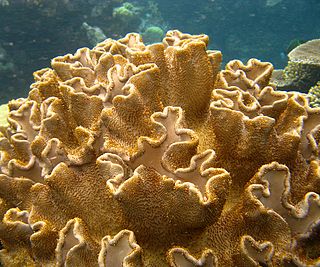
Alcyoniidae is a family of leathery or soft corals in the phylum Cnidaria.
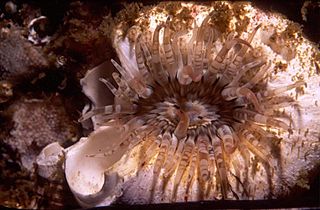
The ring-tentacle anemone is a species of sea anemone in the family Isanthidae.

The Cape zoanthid is a species of zoanthid in the family Parazoanthidae.
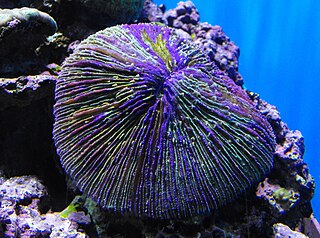
Fungia is a genus of corals in the family Fungiidae. It is monotypic with the single species Fungia fungites, which is found growing on reefs in the Indo-Pacific.

Nephtheidae is a family of soft corals in the phylum Cnidaria. Members of this family are known as carnation corals, tree corals or colt soft corals. They are very attractive and show a wide range of rich and pastel colours including reds, pinks, yellows and purples. They are popular with reef aquarium hobbyists.

The purple soft coral is a species of colonial soft coral in the family Alcyoniidae.
The Valdivian soft coral is a species of colonial leathery or soft coral in the family Alcyoniidae.

The variable soft coral is a species of colonial soft coral in the family Alcyoniidae.

The cauliflower soft coral is a species of colonial soft coral in the family Nephtheidae.
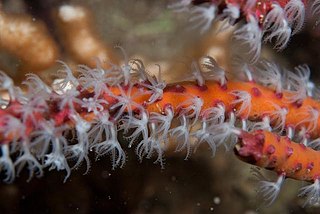
The gorgonian twig coral is a species of gorgonian sea fan in the family Anthothelidae.

The nippled sea fanEunicella microthela previously known by the junior synonym Eunicella papillosa, is a species of gorgonian sea fan in the family Gorgoniidae.

Stylaster nobilis, the noble coral, is a branching colonial hydroid in the family Stylasteridae.

Clavularia is a genus of corals in the family Clavulariidae. They are often referred by the common names star polyps or clove polyps.

Paraminabea aldersladei is a species of soft coral in the family Alcyoniidae. It is found in the central Indo-Pacific. This coral looks like an upside down carrot growing out of the substrate. Its striking white polyps are extended only at night to feed.

Anthomastus giganteus, or the gigantic soft coral, is a deep dwelling species of soft coral from South Africa.

















